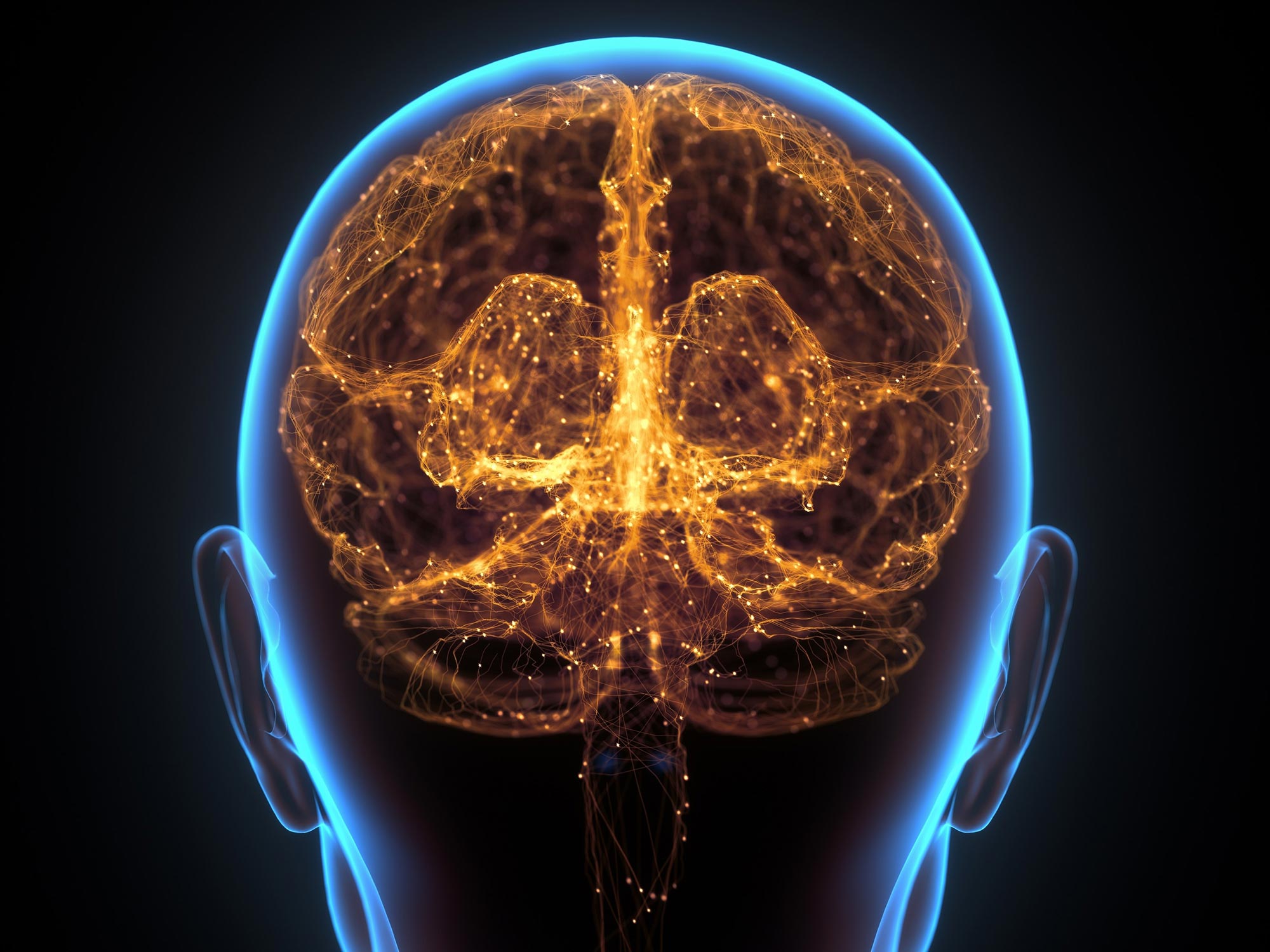تقترح دراسة جديدة فرضية تسمى “اقتران كهربائي خلوي” ، بحجة أن المجالات الكهربائية للدماغ ، التي تم إنشاؤها بواسطة نشاط الشبكة العصبية ، يمكن أن تؤثر على التكوين المادي للمكونات الخلوية الفرعية للخلايا العصبية لتحسين استقرار الشبكة وكفاءتها. يعتمد البحث ، الذي أجراه علماء من معهد ماساتشوستس للتكنولوجيا وجامعة سيتي في لندن وجامعة جونز هوبكنز ، على دراسات سابقة أظهرت كيف يمكن أن ينسق النشاط الكهربائي الإيقاعي أو “ موجات الدماغ ” في الشبكات العصبية وتأثير المجالات الكهربائية على المستوى الجزيئي و ضبط وظائف الدماغ ، وتسهيل الإدراك المرن.
تعمل موجات الدماغ كناقل للمعلومات. تقترح فرضية “اقتران كهربائي خلوي” اقترحت مؤخرًا أن هذه المجالات الكهربائية المتذبذبة تساهم في تحسين كفاءة شبكة الدماغ وقوتها. يفعلون ذلك من خلال التأثير على التكوين الفيزيائي للإطار الجزيئي للدماغ.
من أجل القيام بوظائفه المتعددة الأوجه ، والتي تشمل الفكر ، يعمل الدماغ على مستويات مختلفة. يتم تصوير المعلومات مثل الأهداف أو المرئيات من خلال النشاط الكهربائي المتزامن بين الشبكات العصبية. في نفس الوقت ، تقوم مجموعة من البروتينات والمواد الكيميائية الحيوية الأخرى داخل كل خلية عصبية ومحيطها بتنفيذ الآليات المطلوبة للمشاركة في هذه الشبكات.
تفترض ورقة بحثية جديدة أعدها باحثون في معهد ماساتشوستس للتكنولوجيا وجامعة سيتي في لندن وجامعة جونز هوبكنز أن المجالات الكهربائية للشبكة تؤثر على التكوين الفيزيائي للمكونات الخلوية الفرعية للخلايا العصبية لتحسين استقرار الشبكة وكفاءتها ، وهي فرضية يطلق عليها المؤلفون “Cytoelectric”. اقتران.”

يلقي إيرل ك. ميلر محاضرة عن عمله الأخير في معهد بيكوير للتعلم والذاكرة. الائتمان: معهد MIT Picower
قال إيرل ك. ميللر ، أستاذ Picower في معهد Picower للتعلم والذاكرة بجامعة[{” attribute=””>MIT, who co-authored the paper in Progress in Neurobiology with Associate Professor Dimitris Pinotsis of MIT and City —University of London, and Professor Gene Fridman of Johns Hopkins.
“The brain adapts to a changing world,” Pinotsis said. “Its proteins and molecules change too. They can have electric charges and need to catch up with neurons that process, store, and transmit information using electric signals. Interacting with the neurons’ electric fields seems necessary.”
Thinking in fields
A major focus of Miller’s lab is studying how higher-level cognitive functions such as working memory can rapidly, flexibly, and yet reliably emerge from the activity of millions of individual neurons. Neurons are capable of dynamically forming circuits by creating and removing connections, called synapses, as well as strengthening or weakening those junctions. But, that merely forms a “roadmap” around which information could flow, Miller said.
The specific neural circuits that collectively represent one thought or another, Miller has found, are coordinated by rhythmic activity, more colloquially known as “brain waves” of different frequencies.
Fast “gamma” rhythms help transmit images from our vision (e.g. a muffin), while slower “beta” waves might carry our deeper thoughts about that image, (e.g. “too many calories”). Properly timed, bursts of these waves can carry predictions, enable writing in, holding onto, and reading out information in working memory, Miller’s lab has shown.
They break down when working memory does, too. The lab has reported evidence that the brain might distinctly manipulate rhythms in specific physical locations to further organize neurons for flexible cognition, a concept called “Spatial Computing.”
Other recent work from the lab has shown that while the participation of individual neurons within networks may be fickle and unreliable, the information carried by the networks they are part of is stably represented by the overall electric fields generated by their collective activity.
Cytoelectric coupling
In the new study, the authors combine this model of rhythmic electrical activity coordinating neural networks with other lines of evidence that electrical fields can influence neurons at the molecular level.
Researchers, for example, have studied ephaptic coupling, in which neurons influence each other’s electrical properties via the proximity of their membranes, rather than solely relying on electrochemical exchanges across synapses. This electrical cross-talk can affect neural functions including when and whether they spike to relay electrical signals to other neurons in a circuit.
Miller, Pinotsis, and Fridman also cite research showing other electrical influences on cells and their components including how neural development is guided by fields and that microtubules can be aligned by them.
If the brain carries information in electric fields and those electric fields are capable of configuring neurons and other elements in the brain that form a network, then the brain is likely to use this capability. The brain can use fields to ensure the network does what it is supposed to do, the authors suggest.
To put it (loosely) in couch potato terms, the success of a television network isn’t just its ability to transmit a clear signal to millions of homes. What’s also important is the details as fine as the way each viewer household arranges its TV, sound system, and living room furniture to maximize the experience. Both in this metaphor and in the brain, Miller said, the presence of the network motivates the individual participants to configure their own infrastructure to participate optimally.
“Cytoelectric Coupling connects information at the meso‐ and macroscopic level down to the microscopic level of proteins that are the molecular basis of memory,” the authors wrote in the paper.
The article lays out the logic inspiring Cytoelectic Coupling. “We’re offering a hypothesis that anybody can test,” Miller said.
Reference: “Cytoelectric coupling: Electric fields sculpt neural activity and “tune” the brain’s infrastructure” by Dimitris A. Pinotsis, Gene Fridman and Earl K. Miller, 18 May 2023, Progress in Neurobiology.
DOI: 10.1016/j.pneurobio.2023.102465
The study was funded by the United Kingdom Research and Innovation (UKRI), the U.S. Office of Naval Research, The JPB Foundation, and The Picower Institute for Learning and Memory.

“مدمن ثقافة البوب. عشاق التلفزيون. نينجا الكحول. إجمالي مهووس البيرة. خبير تويتر محترف.”






More Stories
العثور على أكثر المؤشرات الواعدة للحياة على كوكب آخر، بإذن من جيمس ويب
الميثان المريخي يحير العلماء: اكتشاف كيوريوسيتي روفر المفاجئ
لا تزال وكالة ناسا لا تفهم السبب الجذري لمشكلة الدرع الحراري لأوريون